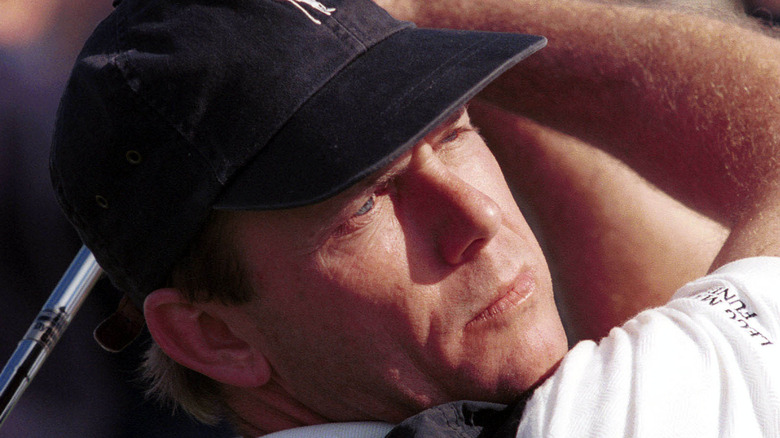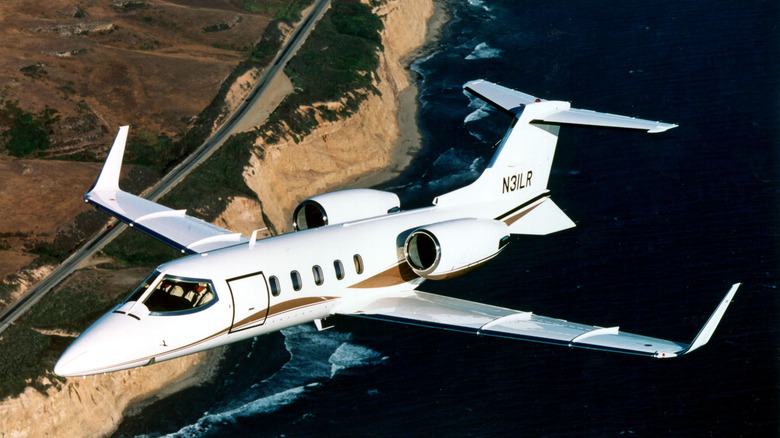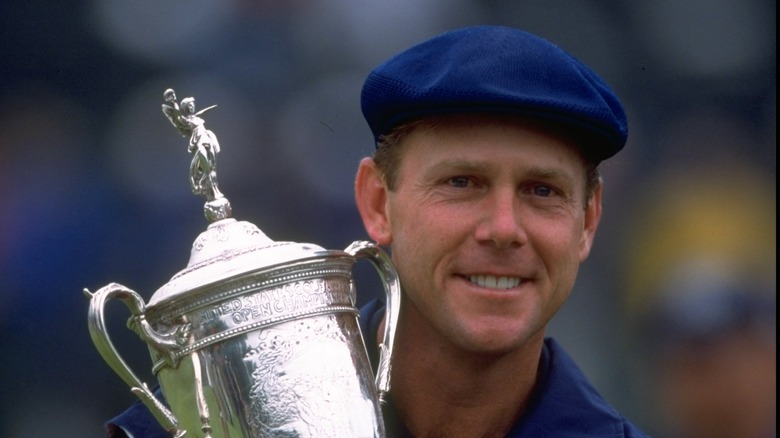The Tragic 1999 Plane Crash Death Of Golfer Payne Stewart
No one could make radio contact with the Learjet that carried golf legend Payne Stewart, three other passengers, and two pilots. Military F-16s flew close enough to get a look at the plane, which was eerily still flying, but the pilots could see that the windows were frosted over. It was the afternoon of October 25, 1999, as the plane veered up and down for four hours before finally crashing in a field in South Dakota, according to Golf Digest. Everyone on board was killed.
The jet had taken off from Orlando International Airport at about 9:20 a.m. Eastern time that day headed for Dallas, per The Washington Post. Stewart had plans to scope out a possible site for a new golf course near Dallas and then head to Houston for a tournament, per the Fort Worth Star-Telegram. The 42-year-old two-time U.S. Open champion, known for his traditional golf attire and smooth golf swing, had by the time of his death racked up 18 tournament wins.
Ghost plane
For several hours and thousands of miles, the Learjet, which was on autopilot, soared through the sky heading northwest across the U.S. until it ran out of fuel and spiraled down nose-first into a pasture near Mina, leaving a smoking crater 10 feet deep and 20 feet wide, according to Knight Ridder. The National Transportation Safety Board later determined the plane had failed to pressurize — the frosted windows were a telltale sign — and the two pilots and four passengers were likely rendered unconscious due to the lack of oxygen in the plane once it reached a certain altitude. By the time the plane crashed, they may have already been dead, per PennLive and The Washington Post.
The phenomenon is known as hypoxia and the people inside the Learjet, including the pilots, Stephanie Bellegarrigue and Michael Kling, would have had very little time, perhaps as little as nine seconds, to put on their oxygen masks before passing out, per Knight Ridder. "Once you shut the brain down, the rest of the body follows," a corporate pilot trainer, Lee Murray, told the news agency at the time of the crash.
Payne Stewart's legacy
Besides Payne Stewart, two of his agents, Van Ardan and Robert Fraley, and Bruce Borland, a golf course designer who decided to go at the last minute, were also aboard the doomed flight. One of the Air Force F-16 pilots, Capt. Chris Hamilton, who trailed the plane and was as close as 50 feet away, knew there was nothing he could do to prevent the Learjet from crashing. "That's very disheartening to pull alongside and know that potentially this airplane may crash with these people on board and there's nothing I can do to prevent that," he told the Knight Ridder at the time.
The golf world was in shock at the news of Stewart's death and came out to both mourn and celebrate the life of the sport's legend. More than 2,000 people, including golf greats Jack Nicklaus and Sam Snead, packed the First Baptist Church of Orlando on Oct. 29, 1999, for a memorial service, according to The Age. "I thank God for Payne," his widow, Tracey, told the crowd that day per the newspaper. "We shared laughter, tears, victories, and defeats." Today, Stewart's legacy lives on through the Payne Stewart Kids Golf Foundation, which helps provide golfing experiences for underserved youth across the U.S.


